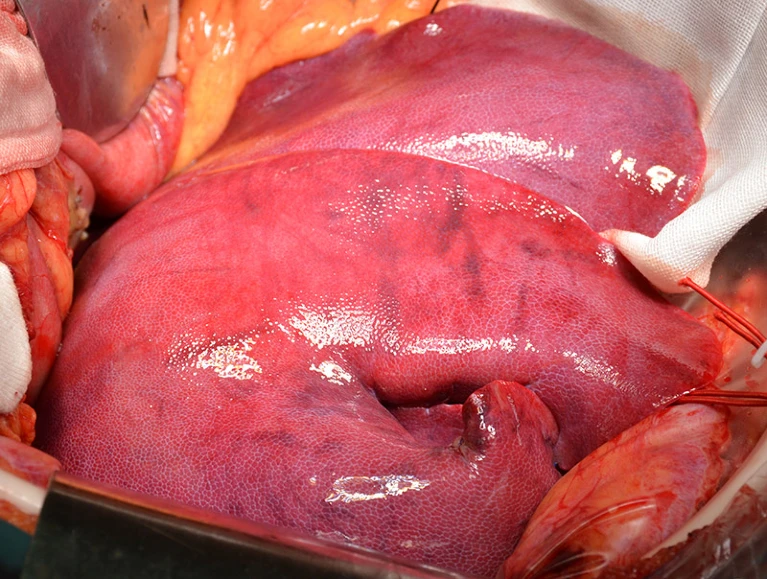
In a first-of-its-kind medical procedure, a 50-year-old man in China, clinically declared dead, has become the world’s first recipient of a pig liver transplant. This marks a significant milestone in the field of xenotransplantation only two years after a 57-year-old, terminally ill American received a heart transplant from a pig. In 2022, doctors transplanted a pig kidney into a human, which has the potential to make the dreaded dialysis obsolete.
These achievements could shape the future of the organ transplantation crisis, where the demand far exceeds the supply.
A Leap Forward in Organ Transplantation


This groundbreaking operation was conducted at Xijing Hospital of the Air Force Medical University in Xi’an, China. The liver was sourced from a Bama miniature pig, genetically engineered so the human body doesn’t reject it. For ten days, the transplanted liver continued to function before being surgically removed. During this time, it secreted 30 millilitres of bile per day. That’s a sign that it was working, although the human liver typically produces 800 to 1,000 milliliters of bile every day.
Earlier, in January 2024, surgeons at the University of Pennsylvania attached a brain-dead patient to a refrigerator-sized machine with a pig liver mounted in the middle of it. This outside-the-body liver worked for three days.
The new development marks the first time a xenotransplant liver has been shown to work inside the human body. It involved a grueling nine-hour surgery, during which the original liver was left in place, Nature reported.
Progress with caveats
Despite the success of this proof of concept, the field of xenotransplantation faces numerous challenges. The liver is one of the most complex organs making it particularly difficult to transplant from animals to humans. The liver’s role in detoxification and protein synthesis is intricate. Pig livers may only serve as a temporary solution rather than a long-term replacement, but perhaps future breakthroughs could overturn this limitation.
There are also important ethical considerations and regulatory standards that need to be sorted out. Open questions remained about the long-term impacts, rejection rates, and the possibility of cross-species disease transmission of animal-sourced organ transplants.
Researchers and medical professionals are closely watching these developments, eager for more detailed data on the procedure’s safety, functional benefits, and the immune response in humans. The ultimate goal is to refine these techniques so that, one day, it could turn into a safe procedure that adds years of quality life for patients, potentially saving thousands of lives annually.
Thanks for your feedback!
